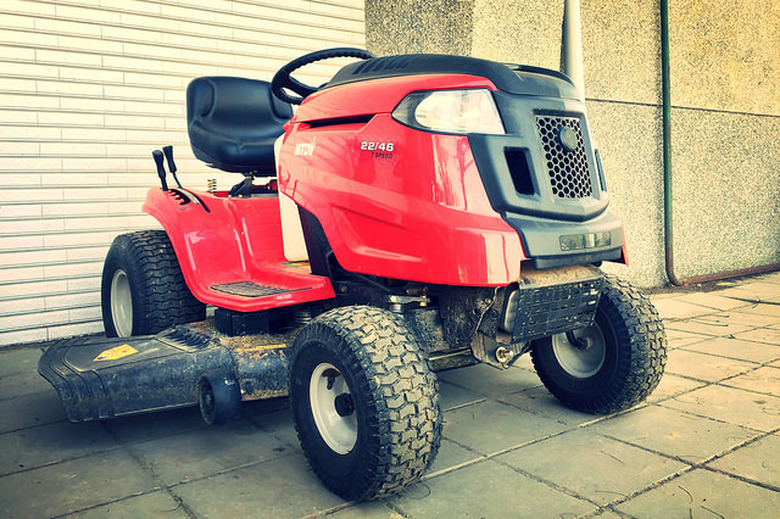How To Charge A Riding Lawn Mower Battery With A Car
You may get an unpleasant surprise after leaving your riding mower in storage for the winter. Lead-acid batteries can slowly discharge in the cold weather, and when you turn the key in the spring, all you hear is ... well ... nothing. Assuming the battery is in good enough condition to accept a charge, you can use your car to get the mower going. The best way to charge the battery is to jump-start the mower and leave it running to allow the alternator to do the job. You can overheat and damage the battery, and possibly even cause an explosion, by leaving it hooked up to the car.
The Advantages of a Battery Charger
The Advantages of a Battery Charger
A battery charger communicates with the target battery, and when the charge level reaches a certain point, it reduces the input current and tops off the battery by trickle charging. This prevents the battery from overheating and producing chemicals that damage the battery cells and shorten the life of the battery. A battery charger also controls the input current of the initial bulk charge, which also ensures the target battery doesn't charge too quickly and overheat. You get neither of these features when you leave your riding mower battery hooked up to your car battery, and the results could be disastrous.
The danger of overheating and damaging the mower battery increases if you leave the car running while the batteries are connected. You should turn the car off, because the output of the car's alternator is greater than that of the mower. If you leave the car off while you charge the mower battery, however, you can easily drain the car battery, and you could end up having to jump-start the car.
Jump-Start the Mower If You Don't Have a Charger
Jump-Start the Mower If You Don't Have a Charger
It's safe to jump a riding mower battery from a car battery, provided the battery in the mower is a 12-volt one. Once the mower is going, just leave it running for a hour or two, and the mower's alternator, which functions like a battery charger, will do the rest. Ideally, you should get the mower going just before you do a large mowing job. At the end of the job, the battery should be more-or-less fully charged. Here's how to jump the mower battery:
Step 1
Park your car close enough to the mower to allow jumper cables to reach from one battery to another. The mower battery is usually under the seat, so if you park the car behind the mower, you'll be closer than if you park in front of it.
Step 2
Turn off the car; set the brake, and open the hood. Open the battery compartment in the the mower and clear out any paraphernalia that may be in the way. Lift the plastic covers off the battery terminals in both vehicles.
Step 3
Connect the cables in this order:
- The red lead to the positive terminal on the mower battery.
- The other end of the red lead to the positive terminal on the car battery.
- The black lead to the negative terminal on the car battery.
- The other end of the black lead to an exposed piece of metal on the body of the mower.
Step 4
Start the mower. Do not turn the car on before you do this. If the mower doesn't start, it's safe to leave the batteries connected for a minute or two to partially revive the dead battery, then try again. Once the mower is going, disconnect the cables in the reverse order in which you connected them.
Tip
After you run the mower for an hour or two, it should start right up again after you turn it off. If it doesn't, the battery may not be able to hold a charge, and you may need a new one.
